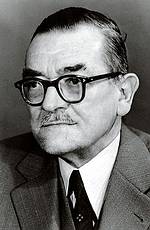Bernhard Struck was born in Heidelberg in 1888. There he spent his childhood and youth. After finishing school in 1906 Struck took up his studies in Heidelberg and continued them in Berlin.
Geography, Ethnology, Physical Anthropology and Natural Sciences were his major subjects. Struck also had a strong interest in African languages, which he studied under Carl Meinhof. Moreover, Felix von Luschan was among his teachers.
In 1908/09 Struck took up an assistant position at the Department for Africa and Oceania of the Ethnological Museum (formerly: Staatliches Museum für Völkerkunde) in Berlin.
From 1913 on he worked at the Zoological and Anthropological Museum (now: Museum for Ethnology) in Dresden. Between 1914 and 1918 he had to participate in World War I and eventually became a prisoner of war.
In 1921 Struck completed his doctorate at the Department for Philosophy in Tübingen. Two years later he not only became a curator at the Zoological and Anthropological Museum (now: Museum for Ethnology) in Dresden.
Struck obtained his habilitation at the Technical University Dresden in 1924 and became an associate professor. Besides lecturing, Struck (accompanied by Hugo Bernatzik) did some researches in Portuguese-Guinea (now: Guinea-Bissau) in 1930/31, where he collected linguistic and ethnographic data.
Between 1934 and 1936 Struck was interim head of the Zoological and Anthropological Museum (now: Museum for Ethnology) in Dresden. In 1937 he was appointed full professor at the Technical University Dresden and became head chairman of the Department for Anthropology. In 1941 he was head of the expert section on Colonial Anthropology.
At the end of World War II the Department for Anthropology was closed but reopened in winter 1946/47. Struck kept lecturing until his retirement in 1953 and moreover was interim head of the department until 1960.
Bernhard Struck died in Jena in 1971.
(Text written by Vincenz Kokot in June 2012, based on BAA Prof. Riese; photo source: http://www.voelkerkunde-dresden.de/index.php?id=188)
Short Portrait: Bernhard Struck

Bernhard Struck
 further information
further information
